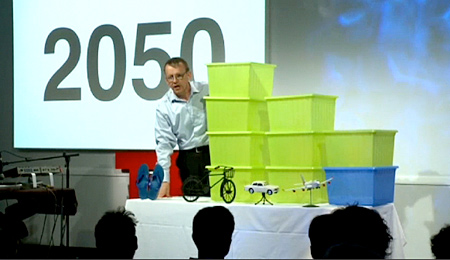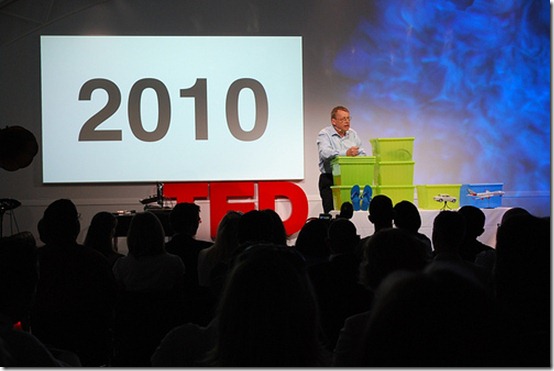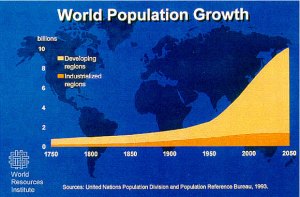What is the connection between religion and population growth? The answer might surprise you: absolutely nothing. Well, according to Hans Rosling.
In his April 2012 TED-Talk, Rosling graphs the relationship between religion, income and children between zero and fifteen years olds. He shows that there is no connection between religion and babies, and that there is a much closer connection between:
1 – mortality rates and babies born ie the more likely a baby is to die, the more babies a mother will have.
2 – women’s education, employment opportunities and getting married older and the number of babies a mother will have.
It’s well worth watching:
[youtube]http://www.youtube.com/watch?v=ezVk1ahRF78[/youtube]
Using a new medium of boxes – 1 per billion people – Rosling demonstrates why it is inevitable that humanity will reach 10 billion and hence all planning for food, water, housing etc, must be taking into account an additional 3 billion people.
This is an interesting point, though he made the same point pretty clear in his last talk. I’m curious about a few cultural and religions trends that don’t seem to be captured in this animated graph.
For example, in my 2010 visit to India it seems to me that the Indian women had so many babies not due to economic or mortality rates, but as due to their culture. More babies = higher status, at least for the women of lower incomes that I met. Culture isn’t religion but the large red dot that represented India showed a huge reduction in babies. That is, my local observation conflicts with this data. That being said UNICEF confirms that the fertility rate in 2010 in India was 2.6 [1], so I suppose it must be. I guess it depends how the US (who is the provider of the data) has collected it… I’ve asked a friend in India for their opinion and will post that when I hear from him.
Another point that has me a little wary is the connection between different religious laws/controls and birthrates. For example, if Catholicism continues a ban on birth control, surely that will have an affect on birth rates? This distinction is obviously absorbed by the joining together of all the denominations of Christianity under one banner.
Forgetting the detail for now let’s consider the big population question that seems to remain: will we stop at 10 billion?
Rosling makes it clear this will happen only if we:
1 – rid the world of absolute poverty in a way that empowers people/nations to stay out of it
2 – address the various forms of violence that are preventing child survival rates
3 – provide access to child planning
4 – continue to die off when we are 65+ at the same rates as the past, i.e. not using medicine to continue to make us live longer, or preserve our brains in robotic bodies…
Will this happen? Well if you look at the world today you’d probably say no and predict the population increasing far beyond 10 billion. However if something happens to change this eg (following the order of above) we:
1 – reverse neo-liberalist policy that make the “3rd world” provide us cheap raw materials and labour
2 – we find non-violent ways to resolve political, tribal and personal conflicts
3 – the pope embraces condoms (kidding, well sort-of kidding… global family planning does require the spread of condoms)
4 – we realize death ain’t that scary and using medicine to make us live forever ain’t a good aim
So to conclude, while Rosling’s talk is all good in theory and proves the minimum population we can stabilize at is 10 billion, I do wonder about how valid the statistics and analysis are in practice… love to hear your thoughts.
References:
[1] http://www.unicef.org/infobycountry/india_statistics.html




